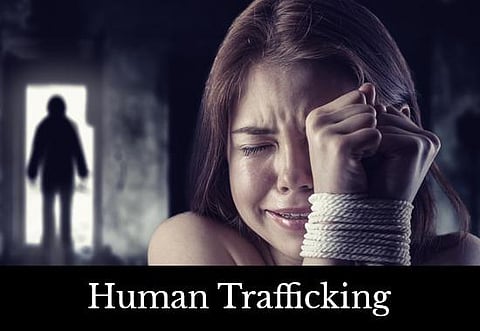

Human trafficking remains a grave issue plaguing societies worldwide, with vulnerable individuals, particularly women, falling prey to deceptive schemes promising a better life. In recent times, the state of Punjab in India has witnessed an alarming increase in cases involving the trafficking of women to Oman. This article serves as an in-depth exploration of the methods employed by traffickers, shedding light on the experiences of these women and the need for urgent action to combat this heinous crime.
I. The Exploitative Mechanisms:
1. Tourist Visa Trap:
Traffickers entice unsuspecting women with the promise of jobs in Oman, luring them under the guise of tourist visas. These visas are then extended for two years, a claim used to instill confidence in the victims.
2. Exorbitant Fees:
Traffickers charge exorbitant amounts ranging from Rs 50,000 to Rs 70,000 per victim, exploiting their desperation for financial security.
3. False Promises:
Victims are presented with job prospects as domestic helps or caretakers, ensuring higher salaries to entice them. These false promises mask the grim reality that awaits them.
II. The Trafficking Process:
1. Fake Companies:
Unscrupulous travel agents establish fake companies in Middle Eastern countries to give the appearance of legitimacy. These fronts help facilitate their criminal activities.
2. Local Middlemen:
Traffickers employ local men and women in Middle Eastern countries who have prior work experience there. These intermediaries seek out impoverished individuals in India, often those with minimal education, and paint an alluring picture of the monetary rewards awaiting them.
3. Trust and Deception:
The shared regional background between the middlemen and victims fosters trust, making it easier for traffickers to manipulate their targets. Assurances of assistance with travel documents and visa formalities further deceive the victims.
III. The Terrifying Reality in Muscat:
1. Confiscation and Isolation:
Upon arrival in Muscat, victims’ passports and cell phones are confiscated, severing their connection with the outside world. They are confined to designated locations until they are sold to their captors.
2. Coercion and Exploitation:
Victims are coerced into signing contracts they do not comprehend due to illiteracy or language barriers. These contracts, often in English, grant consent for two years of work against a sum of approximately Rs 1.50 lakh. Shockingly, victims often find themselves subjected to forced prostitution alongside domestic chores.
3. Abuse and Inhumane Conditions:
Women who resist the exploitation are subjected to physical violence, starvation, and inhumane living conditions. They are frequently sold from one household to another by local agents, perpetuating their suffering.
IV. The Long Road to Rescue:
1. Desperate Pleas:
Some victims manage to send desperate messages to their families back home, revealing their distressing situations. These messages serve as their only lifeline to escape their harrowing circumstances.
2. Family Intervention:
Families contact Indian officials, who then liaise with the Indian Embassy in Muscat. However, the rescue process is often protracted, leaving victims in agonizing limbo.
3. Shelters and Tragic Consequences:
The Indian Embassy’s shelter homes frequently house dozens of women awaiting repatriation. Sadly, the aftermath of trafficking often leaves victims with physical and psychological trauma, with some even succumbing to the harsh realities they endured.
Conclusion:
The surge in human trafficking cases involving Indian women being lured to Oman under false pretenses demands immediate attention and